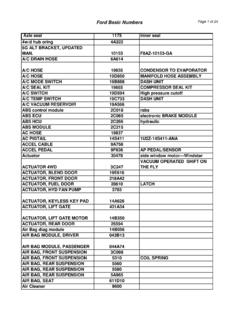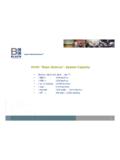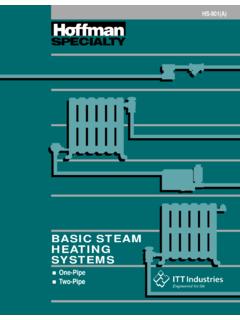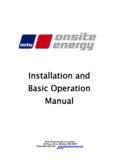Transcription of National Shelter is Australia’s peak housing advocacy ...
1 National Shelter is Australia's peak housing advocacy organisation . We are dedicated to advocating for a fairer, more just housing system , particularly for low-income Australian households. We aim to make housing more accessible, affordable, appropriate, safe and secure for everyone. Fuel on the fire Who we are ACOSS is the peak body of the community services and welfare sector and the National voice for the needs of people affected by poverty and inequality. Our vision is for a fair, inclusive and sustainable Australia where all individuals and communities can participate in and benefit from social and economic life. What we do ACOSS leads and supports initiatives within the community services and welfare sector and acts as an independent non-party political voice. By drawing on the direct experiences of people affected by poverty and inequality and the expertise of its diverse member base, ACOSS develops and promotes socially and economically responsible public policy and action by government, community and business.
2 Join ACOSS. Anybody can become an ACOSS member. We have memberships available to organisations, both National and local, and free to individuals. Go to to find out more. Australian Council of Social Service (ACOSS). Locked Bag 4777. Strawberry Hills NSW 2016. Email: Website: 2015 Australian Council of Social Service 2015. ISSN: 1236 7124. This publication is copyright. Apart from fair dealing for the purpose of private study, research, criticism, or review, as permitted under the Copyright Act, no part may be reproduced by any process without written permission. Enquiries should be addressed to the Publications Officer, Australian Council of Social Service. Copies are available from the address above. This paper has been prepared by Peter Davidson and Ro Evans with advice from Jacqui Phillips, Judy Yates and ACOSS Policy Advisers Rick Krever, Nicholas Gruen and Julie Smith. All views and opinions expressed are those of ACOSS. Cover photo: 2. Tax Talks 2.
3 Summary .. 4. How do these tax breaks work? 5. What should be done? 6. Negative gearing myths and facts 7. Introduction .. 8. 1 Australia's housing affordability crisis .. 8. Causes of the crisis .. 10. 2 Negative gearing and the Capital Gains Tax discount for investment properties 12. How do these tax breaks work? .. 12. How widespread is their use? .. 13. What do they cost and who gains? .. 15. 3 What is their impact on housing markets and the economy? .. 17. housing impacts .. 17. Wider economic impacts .. 21. 4 What should be done? .. 23. Reducing the tax bias towards capital gains: .. 23. The Henry Report' 23. Restricting deductions for investment expenses .. 23. The myth of 1985' .. 25. Improving on past policies .. 27. 3. Fuel on the fire A vital goal for tax reform is to improve the affordability of housing . Australia has among the most expensive housing in the world. From 2002-12, average prices rose by 92% for houses and 40% for flats while average rents rose by 76% for houses and 92% for flats well above the CPI.
4 The high cost of housing is caused by too much demand chasing too little supply. Since 2000 there has been an explosion of rental property investment. From 2000 to 2013 lending for investment housing rose by 230% compared with a rise of 165% in lending for owner occupied housing . But instead of improving affordability, it has made matters worse: Investors are bidding up the price of existing homes without building enough new ones. Tax breaks for housing are not the only cause of high housing costs, but they are an important one. This report focusses on negative gearing arrangements and the 50% discount on Capital Gains Tax for investors. It explains how these tax breaks work, who benefits, how much they cost, and their impact on housing markets and the economy. It proposes reforms to improve fairness and efficiency of federal tax support for housing . In the last year for which tax statistics are available (2011) two thirds of individual rental property investors million people - reported tax-deductable losses' of $14 billion.
5 The Capital Gains Tax discount cost the Federal Budget $5 billion and negative gearing arrangements added another $2 billion that year. Negative gearing and Capital Gains Tax discounts for investors together encourage over- investment in existing properties and expensive inner city apartments which lifts housing prices and does little to promote construction of affordable housing : Over half of individual taxpayers with geared rental housing investments are in the top 10%. of personal taxpayers (earning over $100,000 in 2011) and 30% earned over $500,000. Over 90% of investor borrowing is for existing rental properties, not new ones, so investors are bidding up home prices without adding much to the supply of housing . These tax breaks encourage speculative investment with an eye to capital gains, not patient investment with an eye to rental yields. They reinforce the bias in favour of housing investment by small investors with one or two properties, when we need more investment by institutions such as super funds to stabilise the rental property market and give tenants more secure tenure.
6 They fuel speculative housing price booms that destabilise the economy and make it harder for the Reserve Bank to reduce interest rates when needed. With lending for investment properties rising by 150% in Sydney in the last three years, the Reserve Bank warns that investment housing bears close monitoring for signs of speculative Last year APRA issued guidelines to curb excessive lending for rental property investment. 1. RBA (2014) Submission to Senate Economics Committee Affordable housing inquiry. P3. 4. Tax Talks 2. Tax policy, interest rate policy and bank regulation are pulling in opposite directions. Negative gearing arrangements are adding fuel to the fire - the RBA and APRA are trying hard to put it out. How do these tax breaks work? Australia has unusually generous tax treatment for investment in rental property. Unlike most wealthy countries, including the US and UK, our income tax system places no limit on deductions that can be claimed for investment expenses relating to rental properties and other investments producing capital gains such as shares and agriculture.
7 When these assets are sold, the capital gain is only taxed at half an individual tax-payer's marginal rate. When an investment is negatively geared', interest payments on the loan and other investment expenses such as agent fees exceed their rental returns. These losses' can be deducted for tax purposes from the taxpayer's other income, including wages. The problem with this is that in most cases, the investors aren't actually making a loss because the value of the property increases each year. These capital gains' are not included in the calculation of tax until the property is sold, yet without them property investments would not be viable. It is the combination of the taxation of capital gains at half the normal tax rate when the property is sold, and the ability to claim unlimited deductions for losses' in the meantime that drives investors to negatively gear. The tax system encourages people to borrow more than they would otherwise in order to speculate on property values.
8 5. Fuel on the fire What should be done? Tax reform is only part of the solution to our housing affordability crisis, but it is a vital part. Along with reforms of State taxes especially a shift away from reliance on Stamp Duties and towards a broadly based Land Tax we advocate the following reforms to federal taxes affecting housing markets. 1. Restrict tax deductions for negatively geared' property investments''. Income tax deductions for expenses relating to passive' investment in rental housing and other assets such as shares and agricultural schemes should only be offset against income received from those investments (including capital gains) and not against other income (including wages). This should apply to all new investments of this type entered into from 1 January 2016, but not to investments which commenced before that date. [Those investments would be grandfathered' so that existing rules continue to apply until the asset is sold]. Revenue: $500 million in 2015-16; $1,000 million in 2016-17.
9 2. Use part of the revenue savings to strengthen tax incentives for investment in new affordable housing , including building on the strengths of the NRAS scheme As a first step, reinstate funding for round 5 of the National Rental Affordability Scheme to finance the construction of 12,000 new affordable rental dwellings and restore investor confidence in the program. Cost: $40 million in 2015-16; $100 million in 2016-17. 3. Increase tax rates on capital gains and reduce them on other investment incomes including interest bearing deposits and rents, to improve equity and reduce distortion of investment decisions by the tax system . Consistent with reforms advocated in the Australia's Future Tax system ' Report, a common personal income tax discount should be introduced to replace the current tax treatment for capital gains, housing rents, interest bearing deposits, shares and similar investments (excluding superannuation and owner occupied housing ). This should be substantially less than the current 50% discount for capital gains.
10 [This proposal is not costed as it involves changes to income taxes on a number of different types of investment, but it should be designed so as to save revenue overall]. 2. An affordable housing reform agenda, downloadable at: 6. Tax Talks 2. Negative gearing myths and facts Myth 1: The Hawke Government's restrictions on negative gearing from 1985-87 resulted in rent increases and had to be reversed. Fact: The main reasons for rent increases at that time were higher interest rates and a share- market boom which diverted investment from rental property. Even so, this only happened in Sydney and Perth. Lending to rental property investors still rose by 42% across Australia. Myth 2: Negative gearing can't be responsible for overheating in housing markets in recent years because it's been in place for over 20 years. Fact: Negative gearing adds fuel to each housing boom by encouraging property speculation. Its impact has grown because investors have easier access to credit.








